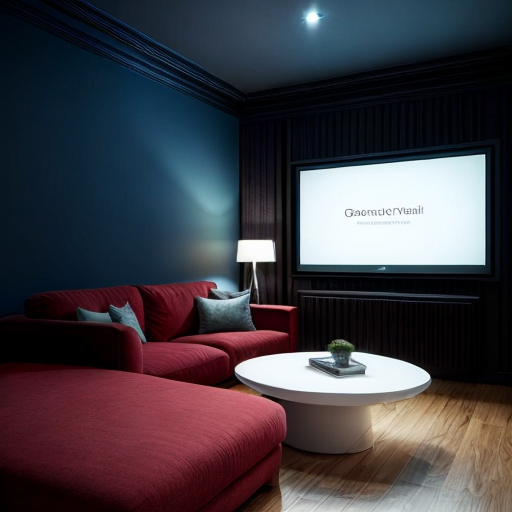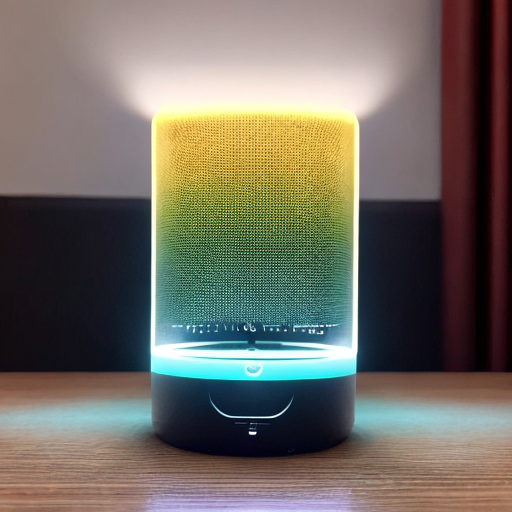Introduction to Smart Home Technology: Understanding the Basics
Welcome to the fascinating world of smart home technology! Imagine a world where your house is not just a place to eat, sleep, and binge-watch your favorite shows, but a sentient being that anticipates your every need. Smart home technology is like having a personal butler, minus the snooty accent and fancy tuxedo. It's all about connecting your devices, appliances, and even your pet's water bowl to create a seamless, automated experience. From controlling your lights with a simple voice command to having your coffee ready the moment you wake up, this technology is here to make your life easier and your home smarter. So, buckle up and get ready to dive into the world of smart home technology, where even your toaster can become your new best friend!
The Inner Workings of Smart Home Systems: Exploring the Components and Connectivity
One interesting fact about how smart home technology works is that it utilizes a combination of sensors, internet connectivity, and artificial intelligence algorithms to automate and control various devices and systems within a home. These sensors can detect changes in temperature, light, motion, and even air quality, allowing the smart home system to respond accordingly. For example, if a smart thermostat detects that no one is home, it can automatically adjust the temperature to save energy. Additionally, smart home devices can learn from user behavior and preferences, adapting to their needs over time. This integration of technology enables a seamless and personalized experience, making our homes more efficient, convenient, and secure.
Welcome to the inner workings of smart home systems, where wires and Wi-Fi reign supreme! Behind the scenes, smart home technology is a symphony of interconnected components and seamless connectivity. Picture your home as a well-choreographed dance, with each device and sensor playing its part. From the hub that acts as the brain of your smart home to the sensors that detect your every move, it's a technological ballet that ensures your lights turn on when you enter a room and your thermostat adjusts to your preferred temperature. So, get ready to unravel the mysteries of smart home systems and discover the magic that happens when your home becomes as smart as you are!
From Voice Assistants to Sensors: Unveiling the Key Technologies Powering Smart Homes

Welcome to the world of smart homes, where technology is not just a luxury, but a way of life. Behind the scenes, a myriad of key technologies work together seamlessly to create the ultimate smart home experience. At the forefront of this revolution are voice assistants, those charming digital companions that respond to your every command. Whether it's turning on the lights, playing your favorite song, or ordering pizza, these voice-activated wonders make controlling your smart home as easy as saying 'Hey, Alexa!' or 'Okay, Google!'
But voice assistants are just the tip of the iceberg. Smart home technology also relies on a network of sensors that are scattered throughout your home, silently observing and reacting to your every move. These sensors can detect motion, temperature, humidity, and even the opening and closing of doors and windows. They act as the eyes and ears of your smart home, relaying information to the central hub, which then triggers the appropriate actions. So, whether you're walking into a room or leaving the house, these sensors ensure that your smart home is always one step ahead, anticipating your needs before you even realize them.
Another key technology powering smart homes is connectivity. With the advent of Wi-Fi and Bluetooth, your devices can now communicate with each other effortlessly. From your smartphone to your smart TV, from your security cameras to your smart thermostat, everything is interconnected, forming a web of convenience and efficiency. This connectivity allows you to control and monitor your home from anywhere in the world, giving you peace of mind and the ability to make adjustments on the go.
In addition to voice assistants, sensors, and connectivity, smart home technology also relies on artificial intelligence and machine learning algorithms. These intelligent systems learn from your habits and preferences, adapting to your needs over time. They can analyze data from various sources, such as your energy usage patterns or your daily routines, and make adjustments accordingly. For example, your smart thermostat can learn when you like your home to be warm or cool and adjust the temperature accordingly, saving you energy and money in the process.
In conclusion, smart home technology is a fascinating blend of voice assistants, sensors, connectivity, and artificial intelligence. It's a symphony of technology working together to create a home that is not only intelligent but also intuitive. So, whether you're turning on the lights with a simple voice command or having your coffee ready the moment you wake up, smart home technology is here to make your life easier, more convenient, and a whole lot smarter.
Making Your Home Smarter: A Step-by-Step Guide to Implementing Smart Home Technology
Fun fact: Smart home technology works through a combination of sensors, artificial intelligence, and connectivity. For instance, when you ask your smart speaker to turn off the lights, it sends your voice command to the cloud, where it is processed and understood by natural language processing algorithms. Then, the command is sent back to your smart hub, which communicates with the connected light bulbs to turn them off. All this happens in a matter of seconds, making your home feel like it's straight out of a sci-fi movie!
Ready to transform your humble abode into a smart home wonderland? Follow this step-by-step guide to implement smart home technology and make your home smarter than ever before. First, start by identifying your needs and priorities. Do you want to focus on energy efficiency, security, or convenience? Once you have a clear vision, it's time to choose the right devices and components that align with your goals. From smart thermostats to security cameras, there's a wide range of options to choose from. Next, ensure that your home has a reliable and robust internet connection, as smart home technology heavily relies on connectivity. Once you have all the necessary devices, it's time to set them up and connect them to a central hub or voice assistant. This hub acts as the brain of your smart home, allowing you to control and monitor all your devices from one central location. Finally, take the time to familiarize yourself with the features and capabilities of your smart home system. Experiment with different settings, create schedules, and explore automation options to truly maximize the potential of your smart home. So, get ready to embark on this exciting journey and watch as your home becomes smarter, more efficient, and effortlessly in tune with your needs.

